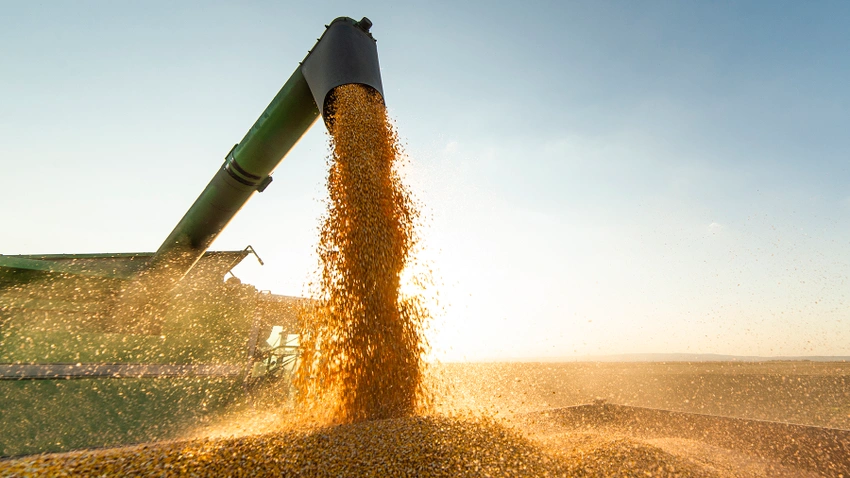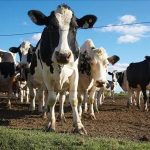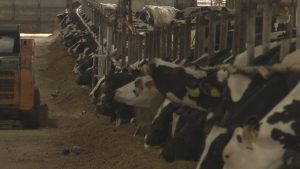
E-Corn-Omics: Low fertilizer prices, 2024 revenue prospects and weather forecasts will remain top of mind this fall.
This time of year, the days are getting shorter and temperatures are getting a cooler. Alfalfa silage, corn silage and snapplage harvest already wrapped up on our family’s Northwestern Illinois dairy farm, but most Midwestern corn and soybean crops are just starting to be combined.
There’s a lot on everyone’s minds, and if you’re anything like my dairy farmer father, you’re probably getting antsy right about now. So, for those of you who depend on preparation to ease anxiety, here are a few items to prioritize while juggling harvest activities this fall.
Weather forecasts
As of early September, there was a greater than 95% chance of an El Niño winter, thanks to the third-warmest subsurface temperatures in the Pacific Ocean this past June. The National Oceanic and Atmospheric Administration predicts El Niño activity – dry in the Eastern Corn Belt, warm in the Upper Midwest – to peak between November 2023 and January 2024.
Even if those forecasts start a little early this fall, the weather prospects should put farmers in good shape for completing harvest and tillage activities in a timely fashion. Through mid-September, extended forecasts into the fall are projecting moderate temperatures and average chances for rainfall.
The biggest risks could come for anhydrous ammonia applications – if soil temperatures take a long time to cool down, application season could linger later in the year and run into winter weather.
Selling opportunities
Weather isn’t the only item on farmers’ minds. The inevitable question that pops up during harvest is “When should I sell my crops?”
El Niño years are notorious for ushering in bearish price pressures. Through early September, USDA is projecting the 2023 corn crop will be the second largest on record while the 2023 soybean crop will take the seventh place in the history books. While crop sizes are far from certain at this point, it seems more likely that corn prices will see a bigger price decline and faster than its soybean counterpart as combines start rolling.
Usage rates are also expected to face headwinds in the 2023/24 marketing year. Buoyed by large soybean crops produced by Brazil earlier this year, international buyers are likely to buy fewer U.S. soybean supplies this fall. Corn exports ended the 2022/23 marketing year on a down note, but could see higher volumes in early 2024, depending on the final size of the 2023 crop as well as how South American production fares in the coming months.
That means that farmers will need to rely more heavily on domestic end users for cash opportunities this year. Corn growers typically don’t see a strong basis bump until the following summer not dissimilar to soybean growers, who have also become accustomed to lucrative harvest prices amid strong international demand in recent years.
Expanding renewable diesel plants will help to offset any potential lackluster soy demand from China this year, as well as some struggling corn usage rates. The expansion signals have been going off in the cattle market for some time now, but more rain for the Plains with an El Niño system could finally help boost corn consumption rates from livestock.
Input pricing
And finally, even as combines finish up picking the 2023 crop, farmers will be keeping a close eye on plans for 2024 production. Even though Russia continues to flood the world with oil, production decreases elsewhere have tightened supplies, making fall fuel more expensive than earlier this year, but still cheaper than the same time last year.
The lower oil prices continue to spill over into the fertilizer market as well. Lower natural gas and corn prices as well as surplus global fertilizer supplies are contributing to more affordable input offerings, which farmers may want to capitalize on ahead of the 2024 growing season.
There are some seasonal pressures beginning to lift fertilizer prices, though overall costs are still nearly half as high as this time last year. But growing global demand for fertilizer expected this fall amid growing South American acreage and missed 2022 applications mean that fertilizer price lows may have already passed.
Take a minute before harvest gets too crazy to map out plans for 2024 production so you can capitalize on affordable inputs. Keep in mind, December 2023 corn prices are down 30% on the year. Through mid-September, new crop futures have managed to stay at or just above the $5/bushel benchmark. And while that may be enough to support 2024 break-evens right now – a year ahead of 2024 crops being harvested – those prices aren’t guaranteed to stick around forever.
On the opposite side of the coin, be prepared for a big corn crop coming to the market this fall. In the U.S., ending supplies are likely to rise to their highest level since 2018/19, especially without fresh signs of demand. Corn prices have sunk back to late 2020 levels as of mid-September 2023, as a record-setting Brazilian crop and expectations for a big U.S. crop keep global supply worries in check.
The August 2023 Farm Futures grower survey found that growers expect to have 50% of 2024 input costs locked in by November 1, 2023. If forward prices at your local elevator can justify 2024 break-evens, it may be a good idea to lock in your profits as well as your expenses for next year’s growing season this fall.
Have a safe and prosperous harvest season! My puppy, Stella, and I will be spending some time at the home farm in Northwest Illinois during harvest this fall, so hopefully my dad can relax a little knowing that the farm’s best milker is back in town!




















